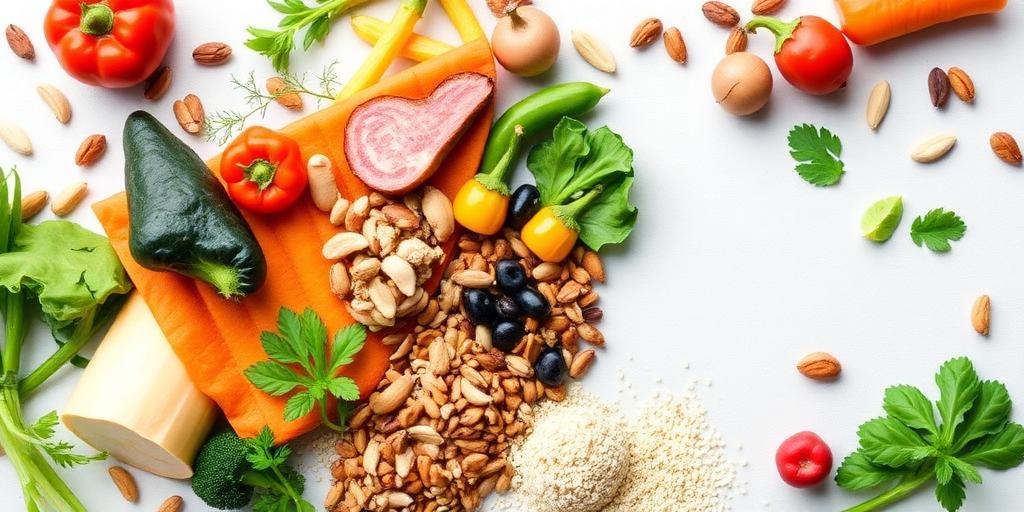How to Create a Balanced Vegetarian or Vegan Diet
Embarking on a vegetarian or vegan diet can be a fulfilling journey, aligning with ethical, environmental, or health-related values. However, ensuring that these diets are balanced and nutritionally complete is crucial for overall well-being. This guide provides a comprehensive overview of how to create a balanced vegetarian or vegan diet, ensuring you receive all the necessary nutrients.
Understanding the Basics
Before diving in, it's essential to understand the core principles of vegetarian and vegan diets:
- Vegetarian: Excludes meat, poultry, and fish. Some vegetarians may include dairy products and eggs.
- Vegan: Excludes all animal products, including meat, poultry, fish, dairy, eggs, and sometimes honey.
Key Nutrients to Consider
When planning a vegetarian or vegan diet, special attention should be paid to the following nutrients:
- Protein: Essential for muscle building, repair, and overall body function.
- Sources: Legumes (beans, lentils, chickpeas), tofu, tempeh, edamame, nuts, seeds, and quinoa.
- Iron: Vital for oxygen transport in the blood.
- Sources: Legumes, tofu, tempeh, spinach, fortified cereals, and dried fruits. Combine with vitamin C-rich foods to enhance absorption.
- Calcium: Important for bone health.
- Sources: Fortified plant-based milk, tofu (calcium-set), dark leafy greens (kale, collard greens), and almonds.
- Vitamin B12: Crucial for nerve function and red blood cell production. Primarily found in animal products.
- Sources: Fortified foods (plant-based milk, cereals, nutritional yeast) and supplements are often necessary for vegans.
- Omega-3 Fatty Acids: Important for heart and brain health.
- Sources: Flaxseeds, chia seeds, hemp seeds, walnuts, and algae-based supplements.
- Vitamin D: Essential for bone health and immune function.
- Sources: Fortified foods, sunlight exposure, and supplements.
- Zinc: Important for immune function, wound healing, and cell growth.
- Sources: Legumes, nuts, seeds, whole grains, and fortified cereals.
Building a Balanced Meal
To ensure a balanced intake of nutrients, aim to include the following components in each meal:
- Protein Source: Legumes, tofu, tempeh, nuts, or seeds.
- Complex Carbohydrates: Whole grains, such as quinoa, brown rice, oats, or whole wheat bread.
- Healthy Fats: Avocado, nuts, seeds, or olive oil.
- Variety of Fruits and Vegetables: Aim for a rainbow of colors to ensure a broad spectrum of vitamins and minerals.
Sample Meal Plans
Here are a couple of sample meal plans to illustrate how to create balanced vegetarian and vegan diets:
Vegetarian Meal Plan
- Breakfast: Oatmeal with berries, nuts, and a side of fortified plant-based milk.
- Lunch: Quinoa salad with chickpeas, chopped vegetables, and a lemon-tahini dressing.
- Dinner: Lentil soup with whole wheat bread and a side salad.
- Snacks: Greek yogurt, fruits, or a handful of almonds.
Vegan Meal Plan
- Breakfast: Tofu scramble with spinach and whole grain toast.
- Lunch: Tempeh lettuce wraps with avocado and a side of mixed greens.
- Dinner: Vegetable curry with brown rice and a side of steamed kale.
- Snacks: Edamame, fruits, or a handful of walnuts.
Tips for Success
- Plan Your Meals: Planning ensures you have all the necessary ingredients and helps you avoid nutritional gaps.
- Read Labels: Check for fortified foods and be mindful of added sugars, salts, and unhealthy fats.
- Variety is Key: Incorporate a wide range of foods to ensure a broad spectrum of nutrients.
- Consider Supplements: Vitamin B12 and vitamin D supplements are often recommended for vegans.
- Consult a Professional: A registered dietitian or healthcare provider can provide personalized guidance to meet your specific nutritional needs.
Conclusion
Creating a balanced vegetarian or vegan diet requires thoughtful planning and attention to nutrient intake. By focusing on a variety of plant-based foods and considering supplementation where necessary, you can thrive on these diets while supporting your health and well-being. Embrace the journey, explore new recipes, and enjoy the many benefits of plant-based eating.









